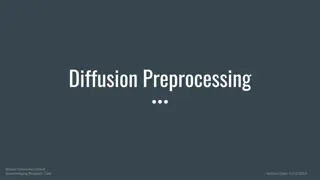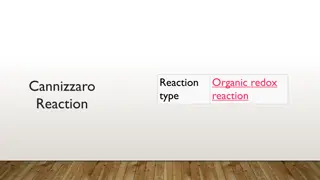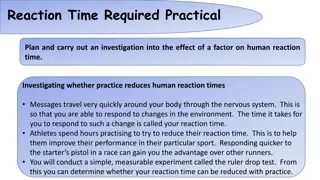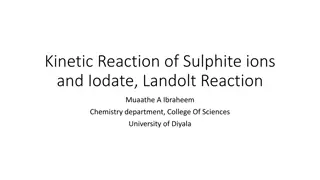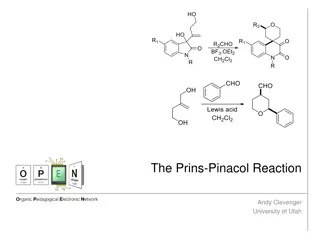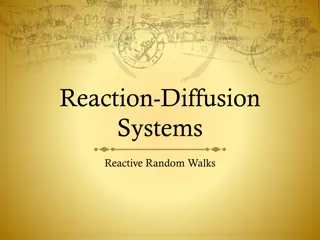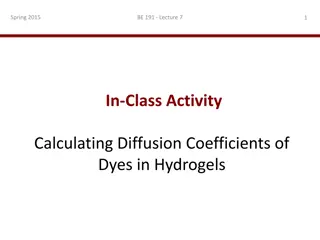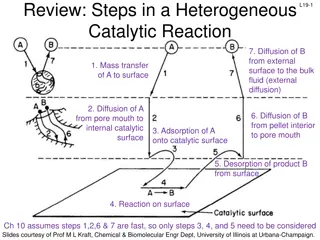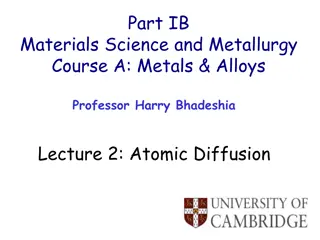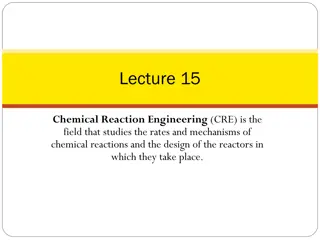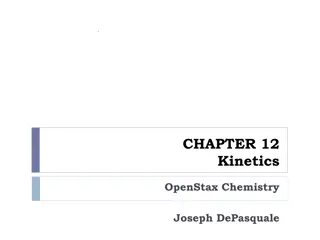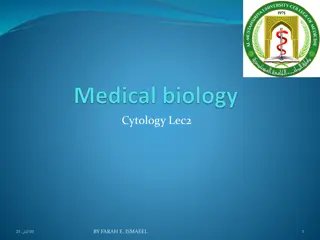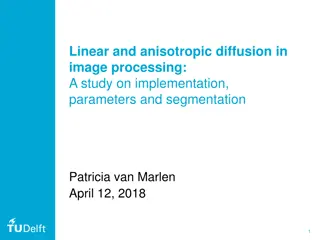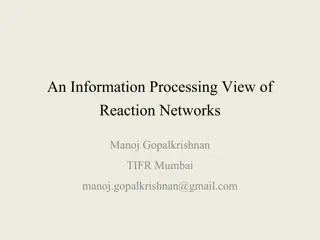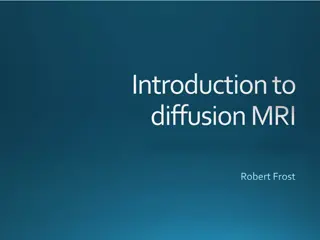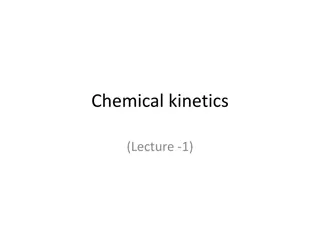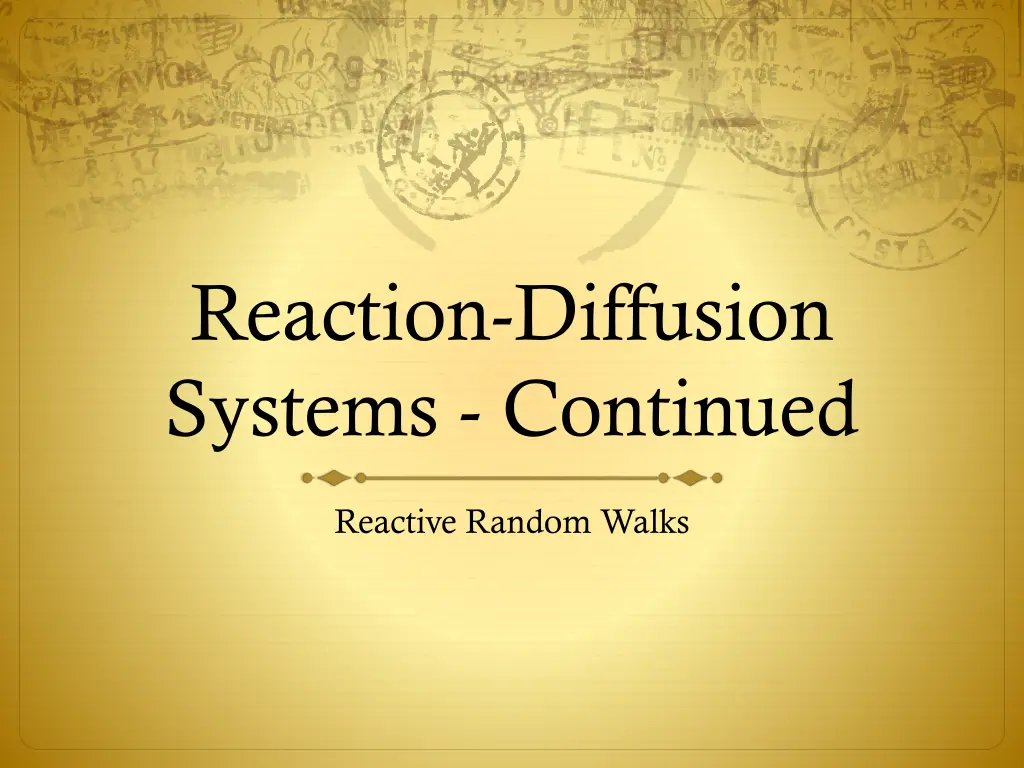
Implementing Reaction-Diffusion Systems for Simulating Random Walks
Explore the implementation of reaction-diffusion systems through a MATLAB code for simulating random walks in a one-dimensional domain filled with A and B particles. Learn about the motion and reaction loops involved in this stochastic method, allowing for diverse outcomes with each code run.
Download Presentation

Please find below an Image/Link to download the presentation.
The content on the website is provided AS IS for your information and personal use only. It may not be sold, licensed, or shared on other websites without obtaining consent from the author. If you encounter any issues during the download, it is possible that the publisher has removed the file from their server.
You are allowed to download the files provided on this website for personal or commercial use, subject to the condition that they are used lawfully. All files are the property of their respective owners.
The content on the website is provided AS IS for your information and personal use only. It may not be sold, licensed, or shared on other websites without obtaining consent from the author.
E N D
Presentation Transcript
Reaction-Diffusion Systems - Continued Reactive Random Walks
The grand question How do you code what we described in our last lecture? Here we focus on how to implement it, but do not worry about doing it efficiently
Consider the following problem (somewhat analogous to the beaker experiment from Chem 101) We have a one dimensional domain of size L that is randomly filled with an equal mass of A and B. A and B can only move by diffusion and react at some rate k Because of the finite size of our domain we impose boundary conditions. For the sake of simplicity we assume periodicity (although results are virtually identical for any bounded setu e.g. no flux) Periodicity means that a particle that exist the right boundary enters through the left and vice versa (i.e. you have a sequence of identical domains next to one another). Note that this also means that particles close to one boundary can interact with particles close to the other
First we set up the general conditions (Matlab code below)
Now we enter a loop that marches over time for kk=1:Nsteps dt=min(dt*epsilon,dtmax); %define timestep allowing it to increase to a maximum Pr=k*mp*dt; %probability of reaction
Update particle positions by a Brownian random walk With this we are done with the motion part of the algorithm
Update your x field to kill reacted particles and calculate your domina concentration End here means loop jumps back to start the next time step and process is repeated until desired number of time steps is completed
Statistical method Note that this is a stochastic method and it means that each time you run the code you will get slightly different results, relating to the specific random initial condition you run. For cases likes these it makes sense to think about the ensemble result (i.e. the average over several realizations) to physically understand what is going on)
What??? Great , we appear to have a numerical method that works well at early times where blue and red match perfectly, but diverges at late times in a way that other methods will not First impression USELESS tool But let s look at this more closely
Whats going on Let s take a look at concentrations in 1d Early Benson & Meerschaert 2008, WRR Intermediate Late
Whats going on Let s take a look at concentrations in 1d Early Benson & Meerschaert 2008, WRR Intermediate Late Isolated Islands of A and B form limiting reaction by how quickly A and B diffuse into one another Incomplete Mixing
Is our method actually capturing some real? Remember we are interested in calculating <C>, the average concentration in the domain, but what happens when <C> is not a good measure of the actual concentration field. Let s go back to our governing equations Let s as before break concentrations into mea and fluctuations
The governing equation for <CA> or <CB> is now New term due the fluctuations that did not exist when we solved for <CA> in the beaker i.e. we assumed the new term was small At early times it is small so the well mixed solution works great, but at late time it is not and so it takes over If we assume a structure for <C AC B> (called invoking a closure argument and next week you will learn the physical basis for it) then we may be able to solve this equation. Let s assume <C AC B> = t-1/2 For now you may consider a constant, but next week you will learn what this constant is
Our closed equation is This type of equation is called a Riccati equation and you can generally solve it. The solution is an ugly combination of Bessel functions and it is difficult to see anything useful from it s general form Don t worry if this is meaningless to you it s just to show that it can be done
However If we take the solution from the earlier page and do a small time expansion it becomes And at late times it looks like
Can be understood, using what is called a dominant balance argument At early times At late times Perturbation term in negligible and so you recover the solution we derived in the last class explains why models match well at early times May seem confusing, but at late time the balance is between both terms on the RHS, which means Or

